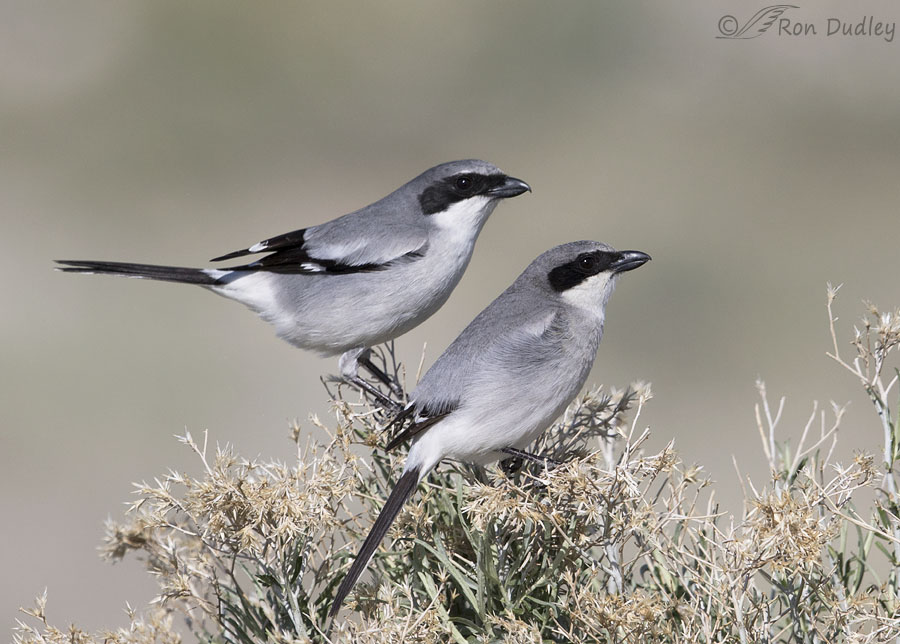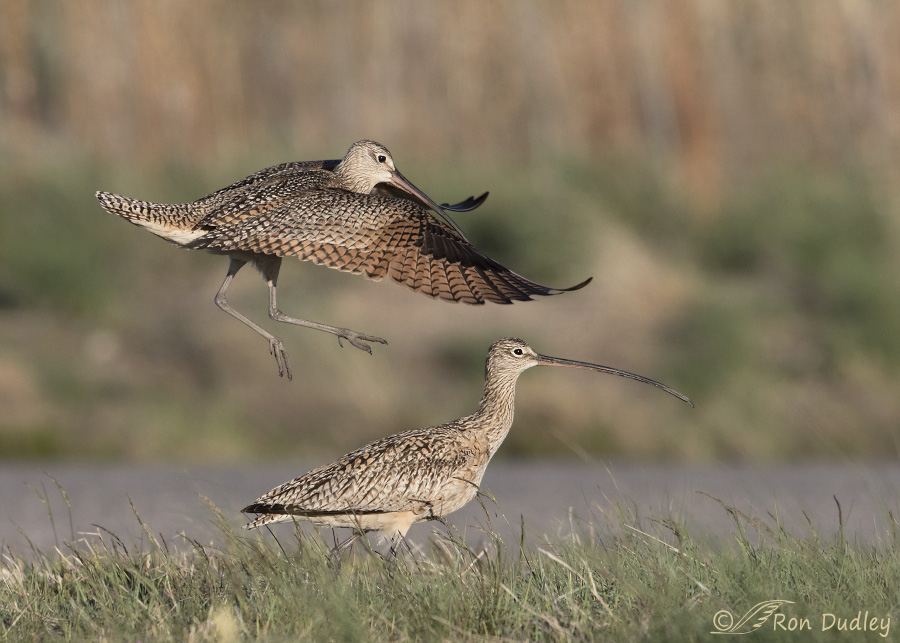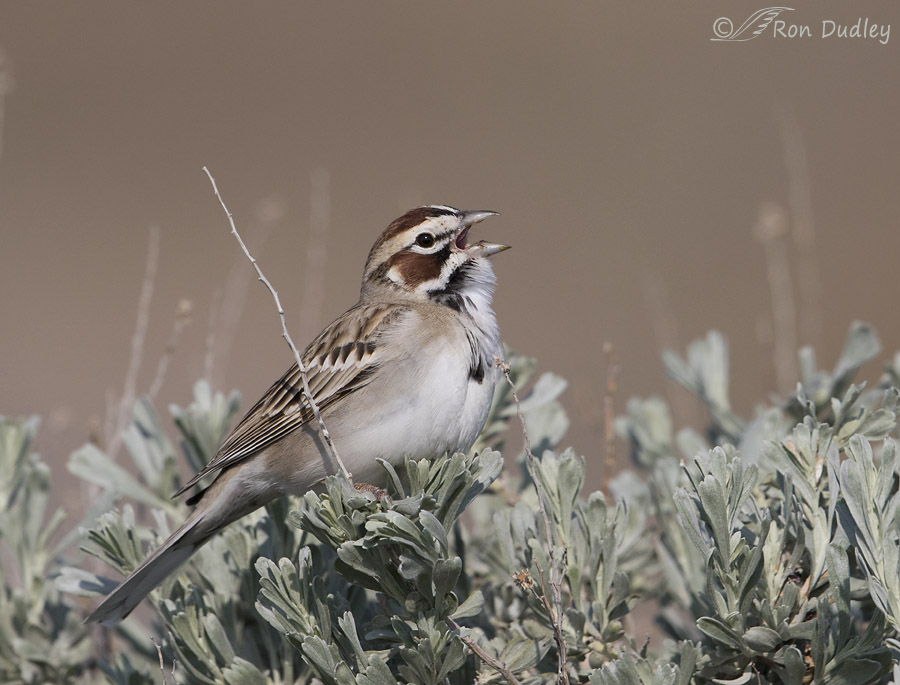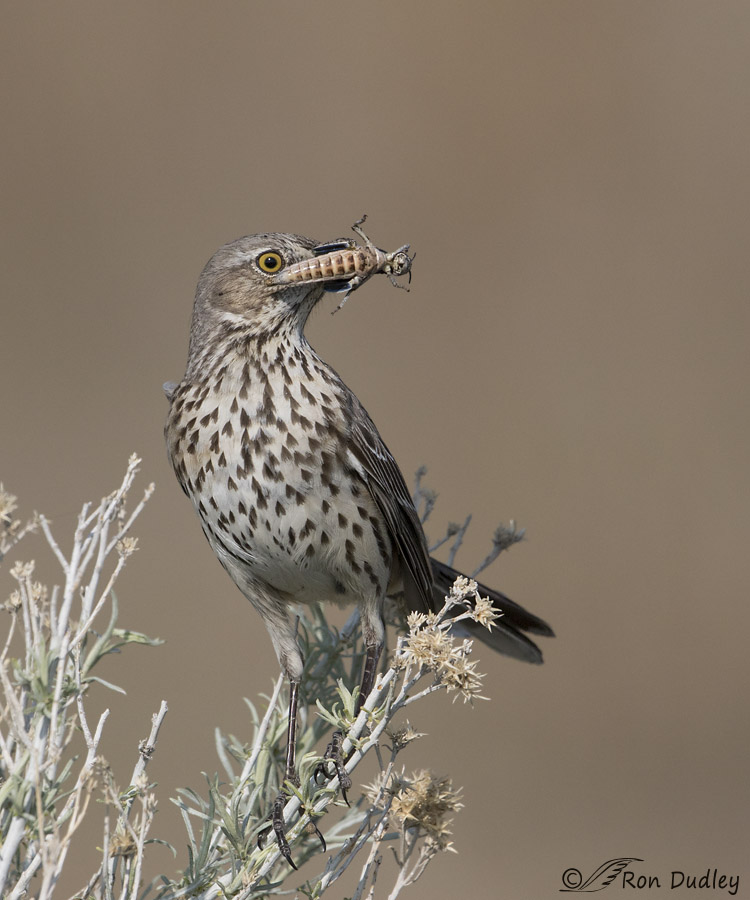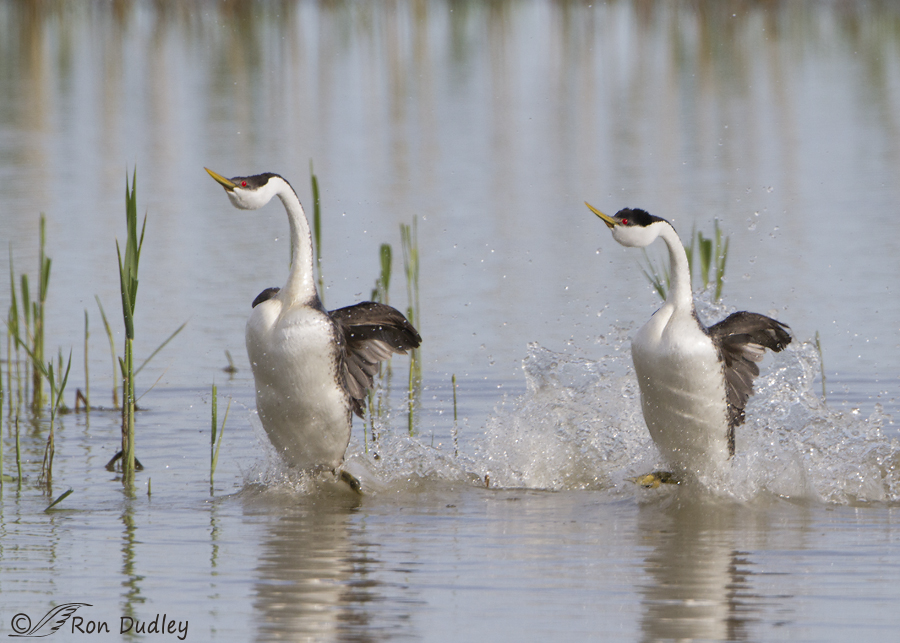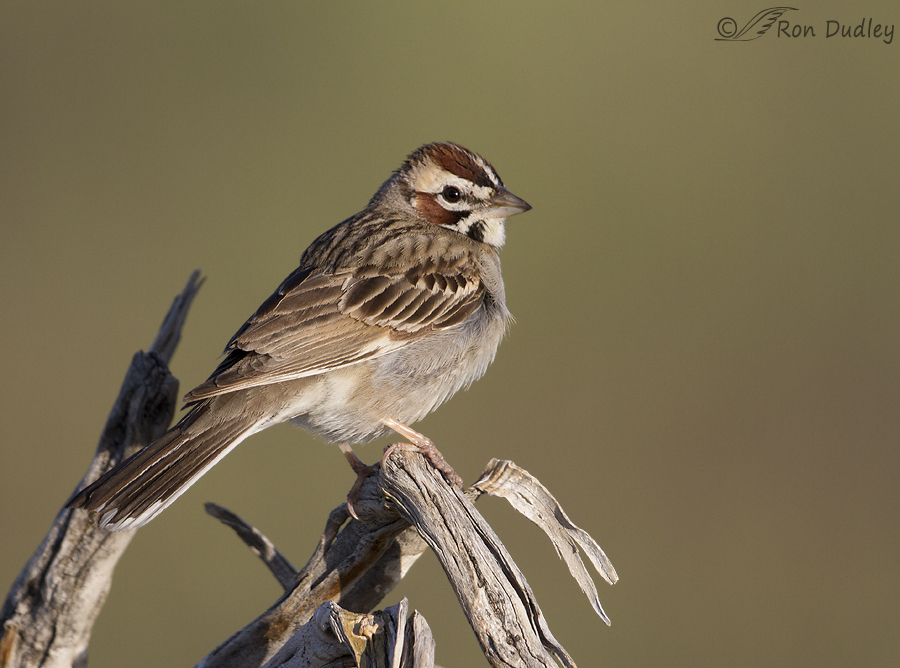Tag: courtship
Male Long-billed Curlew Attempting To Mount A Female
Lark Sparrows
Sage Thrashers – Courtship Display And Prey For Their Youngsters
Western Grebes “Rushing”
Lark Sparrow
Lark Sparrows – A Unique Mating Behavior
Back on May 25 of this year, on this post about Lark Sparrows, I made the following statement at the end of the post: “Now that I have some decent images of this species my next goal with them is to capture some of their unique behaviors. These birds often pass a twig from the male to the female during copulation (an impressive display of multitasking and concentration). And they do a turkey-like strut during courtship. I would love to capture either behavior.” In your comments, several of you gave me encouragement in meeting that goal and 11 days later I was at least partly able to do so. These are those images. A couple of these photos may be a little “clinical” for some, but to me it’s all behavior and it’s all interesting. Techs for all images were: 1/4000 or 1/3200, f/6.3, ISO 640, 500 f/4, 1.4 tc The courtship of Lark Sparrows includes behaviors found in no other songbirds. Prior to actual mating, the male struts like a turkey, with its tail sticking up to show off its white tail spots and its wings drooping to the ground. Then, before the male mounts her, he picks up a twig (or twigs) which he passes to the female just before copulation. When mating is complete (they may mate or attempt to mate up to 20 times in 3.5 minutes) the female often flies off with the twig. The courtship had already begun when I approached this mated pair. Normally, this species doesn’t allow me to get this close…
“Rushing” Western Grebes
The ritualized displays and courtship ceremonies of Western Grebes are among the most complex known in the bird world. One of them is called the “rushing ceremony” which includes 5 distinct phases – only one of which is actually referred to as “rushing”. Yesterday I finally was able to photograph this most dramatic part of the display and believe me it’s been a long time coming. Mia and I were photographing a pair of these grebes with chicks and though we both were aware of another small group of grebes a little further away I was concentrating so intently on those chicks that I didn’t notice what Mia noticed – that the behavior of two of those birds had suddenly changed. She said “they’re going to do something” so all I had time to do was quickly aim my lens at these birds and fire away. Without Mia I’d have missed the entire sequence. 1/2500, f/7.1, ISO 500, 500 f/4, 1.4 tc When rushing, the two birds (usually a mated pair but two males may also do it to attract females) lunge forward and rise completely out of the water. 1/2500, f/7.1, ISO 500, 500 f/4, 1.4 tc As their legs and feet start to churn at incredible speeds their bodies begin to become more vertical… 1/2500, f/7.1, ISO 500, 500 f/4, 1.4 tc until the birds are almost completely vertical to the water and their feet are slapping the surface so fast (16-20 steps per second) that the slapping and splashing noise is loud and can be heard a great distance away. The…
Male Long-billed Curlew Attempting To Mount A Female
Lark Sparrows
Sage Thrashers – Courtship Display And Prey For Their Youngsters
Western Grebes “Rushing”
Lark Sparrow
Lark Sparrows – A Unique Mating Behavior
Back on May 25 of this year, on this post about Lark Sparrows, I made the following statement at the end of the post: “Now that I have some decent images of this species my next goal with them is to capture some of their unique behaviors. These birds often pass a twig from the male to the female during copulation (an impressive display of multitasking and concentration). And they do a turkey-like strut during courtship. I would love to capture either behavior.” In your comments, several of you gave me encouragement in meeting that goal and 11 days later I was at least partly able to do so. These are those images. A couple of these photos may be a little “clinical” for some, but to me it’s all behavior and it’s all interesting. Techs for all images were: 1/4000 or 1/3200, f/6.3, ISO 640, 500 f/4, 1.4 tc The courtship of Lark Sparrows includes behaviors found in no other songbirds. Prior to actual mating, the male struts like a turkey, with its tail sticking up to show off its white tail spots and its wings drooping to the ground. Then, before the male mounts her, he picks up a twig (or twigs) which he passes to the female just before copulation. When mating is complete (they may mate or attempt to mate up to 20 times in 3.5 minutes) the female often flies off with the twig. The courtship had already begun when I approached this mated pair. Normally, this species doesn’t allow me to get this close…
“Rushing” Western Grebes
The ritualized displays and courtship ceremonies of Western Grebes are among the most complex known in the bird world. One of them is called the “rushing ceremony” which includes 5 distinct phases – only one of which is actually referred to as “rushing”. Yesterday I finally was able to photograph this most dramatic part of the display and believe me it’s been a long time coming. Mia and I were photographing a pair of these grebes with chicks and though we both were aware of another small group of grebes a little further away I was concentrating so intently on those chicks that I didn’t notice what Mia noticed – that the behavior of two of those birds had suddenly changed. She said “they’re going to do something” so all I had time to do was quickly aim my lens at these birds and fire away. Without Mia I’d have missed the entire sequence. 1/2500, f/7.1, ISO 500, 500 f/4, 1.4 tc When rushing, the two birds (usually a mated pair but two males may also do it to attract females) lunge forward and rise completely out of the water. 1/2500, f/7.1, ISO 500, 500 f/4, 1.4 tc As their legs and feet start to churn at incredible speeds their bodies begin to become more vertical… 1/2500, f/7.1, ISO 500, 500 f/4, 1.4 tc until the birds are almost completely vertical to the water and their feet are slapping the surface so fast (16-20 steps per second) that the slapping and splashing noise is loud and can be heard a great distance away. The…


